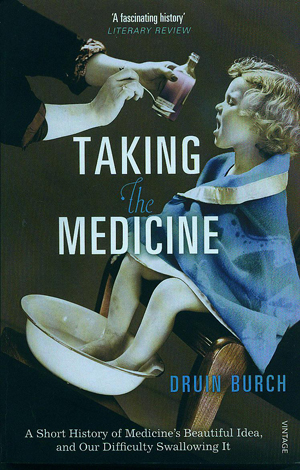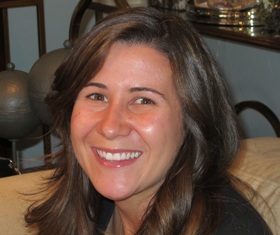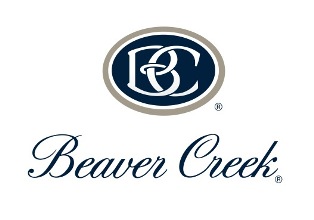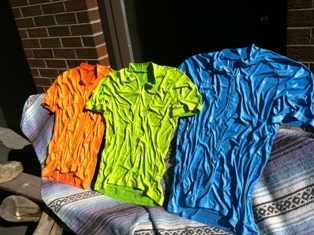The Bookworm Sez
Book Review: Taking the Medicine
You are bombarded with ads, but one caught your ear.The announcer on TV was talking about you - or so it seemed, since you just got your diagnosis. Your ears perked up: he was talking about something that could make you feel better, and it's available now.And then you heard the side effects: nausea, tinnitus, muscle weakness, tingling, and four hours or longer of… what did they say?Is the cure worse than the illness?
Believe it or not, that question has plagued physicians since Moses took two tablets. In the new book “Taking the Medicine” by Druin Burch (c.2009, 2010, Vintage Books - $17.95 / $25.95 Canada - 330 pages, includes index), you'll see why.
When you think about the cures our ancestors used, they seem quaint, if not laughable. Mesopotamian women, for instance, thought crocodile dung made a mighty fine pessary. Those daring ancient Egyptians believed that lettuce was an aphrodisiac. Think about that next time you order salad.
Still, pharmaceuticals had to start somewhere.
Though medical interventions can be dangerous, as Burch points out, somebody had to go first when trying procedures and potions; for instance, a very brave soul discovered one day that if you scratch the seed pod of certain poppy plants, then dry the resulting sap, you can smoke what's left and your pain will magically disappear.
But what led him to try it in the first place?
Burch says that the trial-and-error process was akin to finding something good to eat. The search for relief from suffering, though, was complicated by early scientists' reluctance to test medicines on animals before they subjected humans to “cures”, and by some ingested poisons that took a long time to kill, thus clouding the question of what worked and what didn't. Dosing was dicey, records were sketchy, and conclusions were guesswork more often than not. Still, doctors persevered in the name of medicine.And then the fabric-making industry got involved, as did explorers and missionaries, politicians and chemists. Physicians borrowed from other cultures and from history. Aspirin was safely manufactured around the turn of the century and heroin was sold as cough syrup, never mind the addictive properties. But by the time the world entered War, medicine was more “modern”, but still had a long ways to go…
Looking for a remedy for boredom? You'll find it here sometimes, and sometimes not.
While it's true that “Taking the Medicine” can be lively as a stimulant, there are parts that may make you feel sedated. Author Druin Burch starts at the beginning of humankind and moves forward in this story, but much of the history he relates is dry as a desiccant and much is a re-hashing of things that even the most casual of readers will already have seen in other books.Still, Burch injects a good dose of humor and a spoonful of I-didn't-know-that, which nicely balances the boredom and makes this an easy book to swallow.
If you've often wondered how the stuff in your medicine cabinet got there, check this out. “Taking the Medicine” puts the cure back in curiosity.
Believe it or not, that question has plagued physicians since Moses took two tablets. In the new book “Taking the Medicine” by Druin Burch (c.2009, 2010, Vintage Books - $17.95 / $25.95 Canada - 330 pages, includes index), you'll see why.
When you think about the cures our ancestors used, they seem quaint, if not laughable. Mesopotamian women, for instance, thought crocodile dung made a mighty fine pessary. Those daring ancient Egyptians believed that lettuce was an aphrodisiac. Think about that next time you order salad.
Still, pharmaceuticals had to start somewhere.
Though medical interventions can be dangerous, as Burch points out, somebody had to go first when trying procedures and potions; for instance, a very brave soul discovered one day that if you scratch the seed pod of certain poppy plants, then dry the resulting sap, you can smoke what's left and your pain will magically disappear.
But what led him to try it in the first place?
Burch says that the trial-and-error process was akin to finding something good to eat. The search for relief from suffering, though, was complicated by early scientists' reluctance to test medicines on animals before they subjected humans to “cures”, and by some ingested poisons that took a long time to kill, thus clouding the question of what worked and what didn't. Dosing was dicey, records were sketchy, and conclusions were guesswork more often than not. Still, doctors persevered in the name of medicine.And then the fabric-making industry got involved, as did explorers and missionaries, politicians and chemists. Physicians borrowed from other cultures and from history. Aspirin was safely manufactured around the turn of the century and heroin was sold as cough syrup, never mind the addictive properties. But by the time the world entered War, medicine was more “modern”, but still had a long ways to go…
Looking for a remedy for boredom? You'll find it here sometimes, and sometimes not.
While it's true that “Taking the Medicine” can be lively as a stimulant, there are parts that may make you feel sedated. Author Druin Burch starts at the beginning of humankind and moves forward in this story, but much of the history he relates is dry as a desiccant and much is a re-hashing of things that even the most casual of readers will already have seen in other books.Still, Burch injects a good dose of humor and a spoonful of I-didn't-know-that, which nicely balances the boredom and makes this an easy book to swallow.
If you've often wondered how the stuff in your medicine cabinet got there, check this out. “Taking the Medicine” puts the cure back in curiosity.
![]() 0 Comments on "Book Review: Taking the Medicine"
0 Comments on "Book Review: Taking the Medicine"
Be the first to comment below.



 Vail Town Council to weigh new plan to redevelop T...
Vail Town Council to weigh new plan to redevelop T...  All about indexes
All about indexes  Transforming your social security into a winning r...
Transforming your social security into a winning r...  Pass sales, real estate transactions, revenues inc...
Pass sales, real estate transactions, revenues inc...  Vail Valley native with passion for Biophilic inte...
Vail Valley native with passion for Biophilic inte...  Beaver Creek starts work on new summer activities
Beaver Creek starts work on new summer activities  Land Trust, ECO Trails, Vail Resorts team up to cl...
Land Trust, ECO Trails, Vail Resorts team up to cl...  EUROVISION named Host Broadcaster for 2015 World A...
EUROVISION named Host Broadcaster for 2015 World A...  Vail Resorts brings back Lindsey Vonn's 'School of...
Vail Resorts brings back Lindsey Vonn's 'School of...  Hundreds turn out for 2015 World Championships vol...
Hundreds turn out for 2015 World Championships vol...  Eagle County Senior Health Expo and 9th Annual Hea...
Eagle County Senior Health Expo and 9th Annual Hea...  Final race of Vail Mountain Trail Running Series s...
Final race of Vail Mountain Trail Running Series s...  Before you write your will ...
Before you write your will ...  2015 World Ski Championships volunteer recruitment...
2015 World Ski Championships volunteer recruitment...  Ascent Sotheby’s International Realty in Vail an...
Ascent Sotheby’s International Realty in Vail an...  CDOT outlines road closures for local stages of US...
CDOT outlines road closures for local stages of US...  Italian artist creates unique trophies for Vail, B...
Italian artist creates unique trophies for Vail, B...  Vail Recreation District once again hosting Jake W...
Vail Recreation District once again hosting Jake W... 

